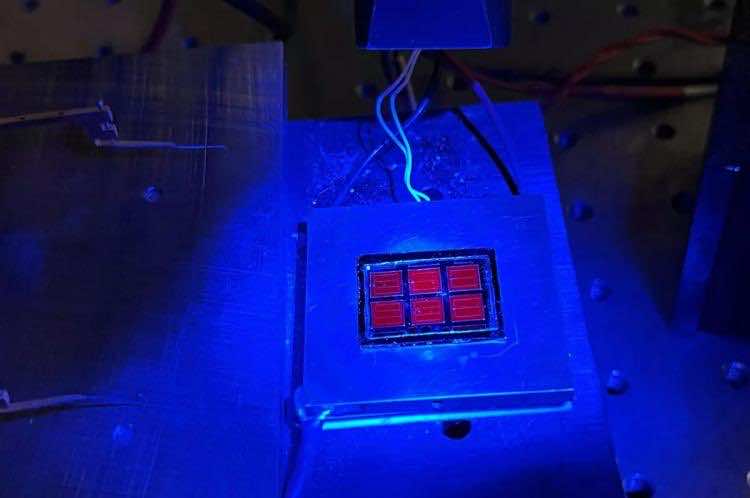A team of scientists lead by the US Department of Energy’s National Renewable Energy Laboratory (NREL) set a new world record for solar cell efficiency, attaining 39.5 percent with a cell made up of three layers of III-V materials.
The new record beats NREL’s previous mark of 39.2 percent, and it only uses three junctions instead of six. The cell is reported in the recent Joule paper “Triple-junction solar cells with 39.5 percent terrestrial and 34.2 percent space efficiency enabled by thick quantum well superlattices.”
The new solar cell uses inverted metamorphic multijunction (IMM) cells and has three “junctions,” or layers that produce electric current in reaction to light. The researchers used layers of gallium-indium-arsenide (GaInAs), gallium arsenide (GaAs), and gallium-indium-phosphide(GalnP).
NREL’s recent work on “quantum wells,” was important to this technique as it allowed it to better tailor each layer to absorb a different portion of the sun spectrum.
“While GaAs is an excellent material and generally used in III-V multijunction cells, it does not have quite the correct bandgap for a three-junction cell, meaning that the balance of photocurrents between the three cells is not optimal,” said Ryan France, senior scientist and cell designer at NREL.
“Here, we have modified the bandgap while maintaining excellent material quality by using quantum wells, which enables this device and potentially other applications.”
The researchers used quantum wells to boost the bandgap of the middle GaAs cell layer, which improved its performance when combined with the other two. While the QW phenomenon is not new, the constraints of working with these materials at the nanoscale scale have limited their practical application in previous research.
The researchers also acknowledged that the processes and materials employed in these cells are costly. On the other hand, NREL is working on a few different techniques to cut these costs dramatically.
NREL also tested its triple junction quantum well cells in the light spectrum they would encounter outside of Earth’s atmosphere, achieving a beginning of life measurement of 34.2 percent — a world record for a three-junction cell in this spectrum, according to the lab.
Source: NREL

